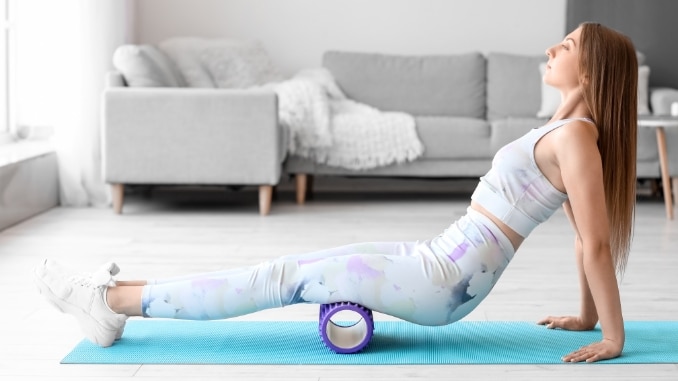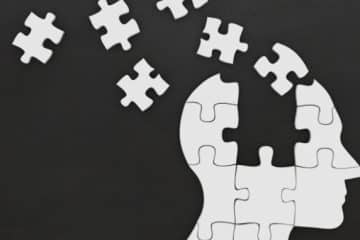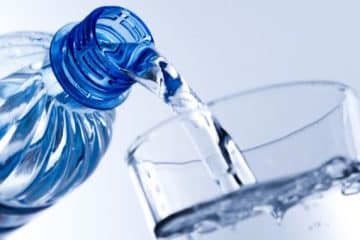Foam rollers are incredibly helpful in easing tightness along the legs. In self-myofascial release (SMR) techniques, these tools serve as self-massage aids to release tension and pinpoint trigger points in the muscles and fascia. Rolling the legs on a foam roller can enhance flexibility, increase blood flow, and reduce muscle soreness. It's particularly beneficial for runners, athletes, and individuals with sedentary lifestyles who often experience tightness in the quadriceps, hamstrings, calves, and IT bands.
Understanding Self-myofascial Release Through Foam Rolling
Utilizing a foam roller for self-myofascial release (SMR) is an effective self-massage technique designed to alleviate tension, enhance flexibility, and address delayed onset muscle soreness (DOMS). This process entails applying targeted pressure on the foam roller and systematically rolling it over different muscle areas to release fascial restrictions. By incorporating foam rolling exercises into a routine, individuals can actively engage in self-care, promoting better muscle recovery and potentially reducing the discomfort associated with delayed onset muscle soreness.
How to Effectively Use Foam Rollers
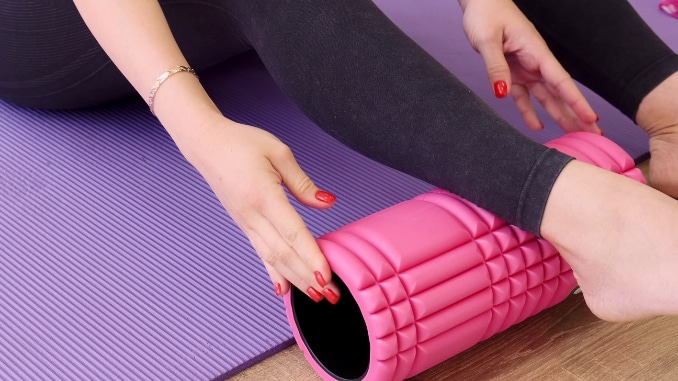
1. Locate the target area
When engaging in self-myofascial release (SMR) with a foam roller, it's crucial to identify specific muscle groups or areas with tightness or trigger points. Common target areas for foam rolling exercises encompass the quadriceps, hamstrings, calves, IT band, and back. Individuals can effectively address tightness and trigger points by focusing on these muscle groups with the foam roll, promoting greater flexibility and mitigating discomfort in these key areas.
2. Apply pressure
Ensure that the pressure exerted on the muscle is sufficient to induce a sense of discomfort without crossing into pain. This technique aims to address specific muscle tightness or trigger points, effectively promoting flexibility and relieving tension.
3. Rolling technique
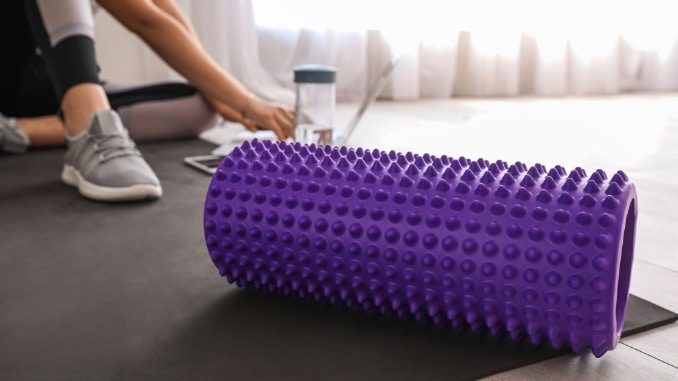
Gently and deliberately roll the foam roller along the muscle from one end to the other, maintaining slow, steady, and controlled movements. Feel free to adjust the angle or position of your body to effectively target various parts of the muscle, particularly if you're focusing on sore muscles.
4. Stay on trigger points
If you encounter a sensitive area or trigger point that causes discomfort, take a break and exert continuous pressure on that spot for 20-30 seconds. This helps release knots and tension.
5. Breathe and relax
Throughout the process, focus on your breathing, and try to relax the muscle being massaged. This aids in the release of tension.
6. Repeat
Continue rolling and targeting different areas as needed, spending extra time on particularly tight spots.
7. Gradual Progression
Start with shorter durations and lighter pressure, gradually increasing both as your muscles adapt to the foam rolling routine. This approach allows for a more comfortable and effective self-myofascial release over time.
8. Hydrate

Ensure proper hydration before and after foam rolling sessions. Hydration supports the overall effectiveness of the process by keeping your muscles and fascia supple and responsive to the therapy.
9. Post-Rolling Stretching
After your foam rolling session, incorporate gentle stretching for the targeted muscle groups. This combination of self-myofascial release and stretching can enhance flexibility and optimize the benefits of your foam rolling routine.
10. Equipment Maintenance
Consistently inspect your foam roller for indications of damage and replace it if needed. This ensures the longevity of the equipment and maintains its effectiveness in providing relief and promoting muscle health.
Best Foam Rolling Exercises
1. Quad Rolling
Move into a forearm plank position with the foam roller under your body, just above your knees. Maintain good alignment with your head, shoulders, hips, and toes. Contract your core, then run the foam roller from the top of your knees to your hip area and back. Be careful not to roll over your knee joints and keep your upper body flat. Perform the movement for 10 repetitions.

2. Inner and Outer Thighs Foam Rolling
For this foam roller exercises for legs, move into a forearm plank position, maintaining good alignment with your head, shoulders, hips, and toes. Place the foam roller along the inside of your thigh. Contract your core, then run the foam roller from just above your knee, towards your hip and back. Repeat the movement. Perform the movement with 10 repetitions on each side.
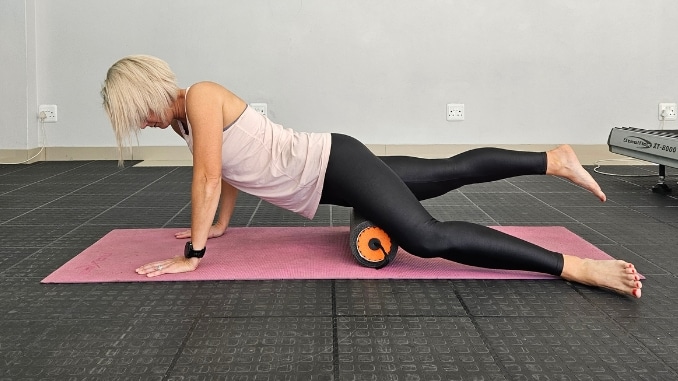
3. Glute Foam Rolling
Sit upright on the floor with your knees bent and your heels on the floor. Place the foam roller under your glute area, ideally moving your body to a 45-degree angle. Run the foam roller from the bottom of your seat, to the top and back. Repeat the movement. Perform the movement for 10 repetitions on each side.
To intensify the massage, apply additional pressure to the tense glute muscle by bending the knee on the corresponding side and crossing the opposite ankle over it. Roll the foam roller repeatedly, targeting the tight spot.
Moreover, to put more pressure on the tight glutes, bend your right knee and cross your ankle over to your left knee.
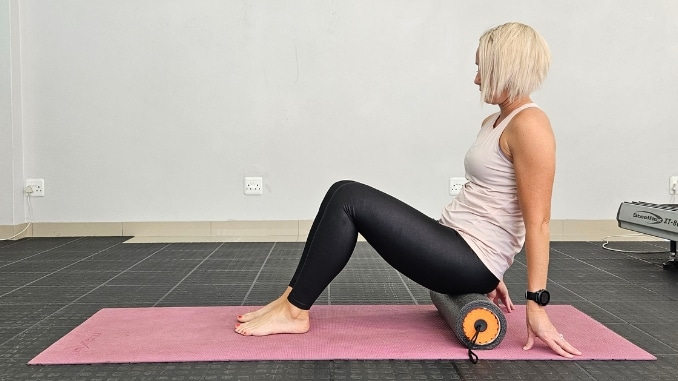 |
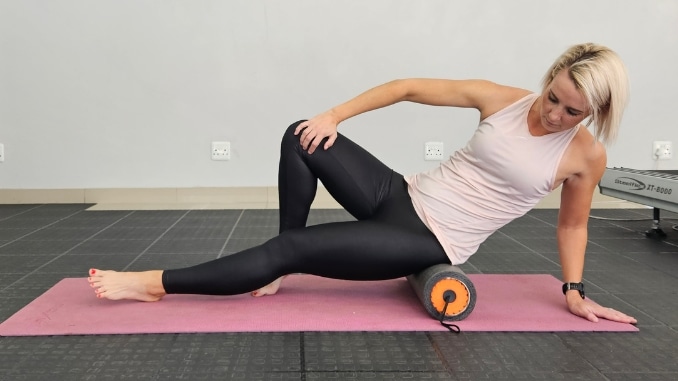 |
4. Calf Foam Rolling
For this foam roller exercises for legs, sit upright on the floor with your legs straight and your hands at your sides for support. Place the foam roller underneath your calf area. Push from your hands to slightly lift your seat off the floor, then run the roller from above your ankles, to just below your knees and back. Perform the movement for 10 repetitions.
To put more pressure onto the tight calf muscles, stack one foot over the other and roll repeatedly, targeting the tight spot.
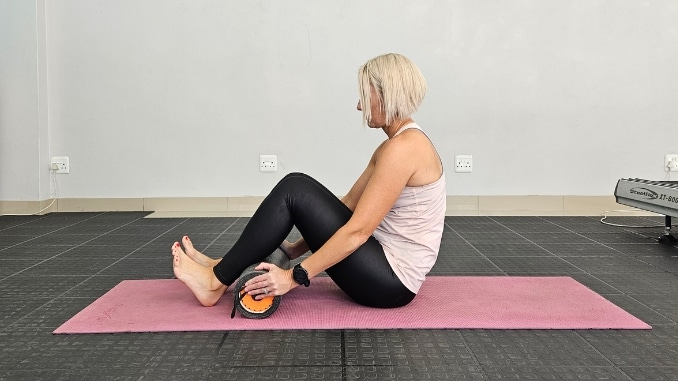 |
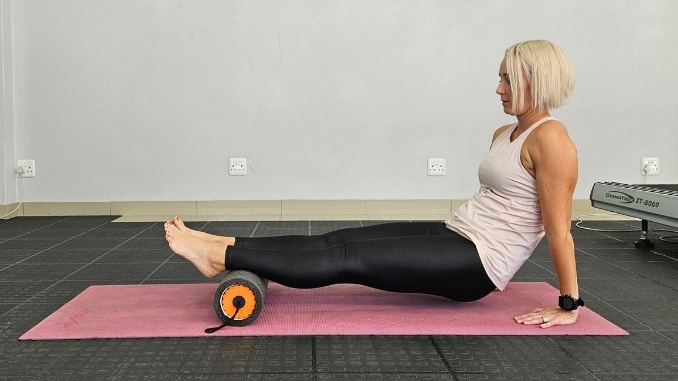 |
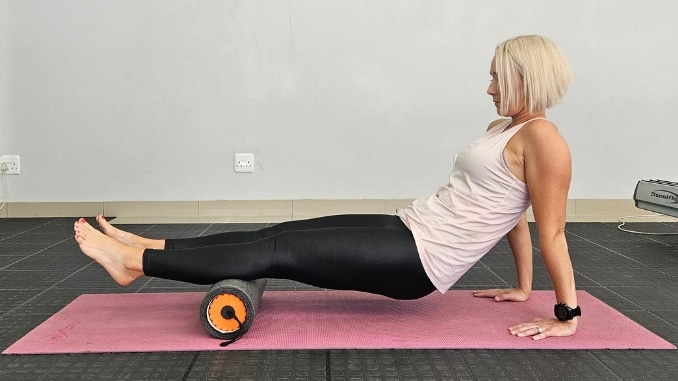 |
5. IT Band Foam Rolling
Begin in a straight-arm plank position, maintaining good alignment with your head, shoulders, hips, and legs. Move to one side and place the foam roller underneath your hip. Cross your top leg over your bottom leg and flatten your foot on the floor. Engage your core and slowly roll the foam roller from the hip down to just above your knee and back. Perform the movement for 10 repetitions on each side.
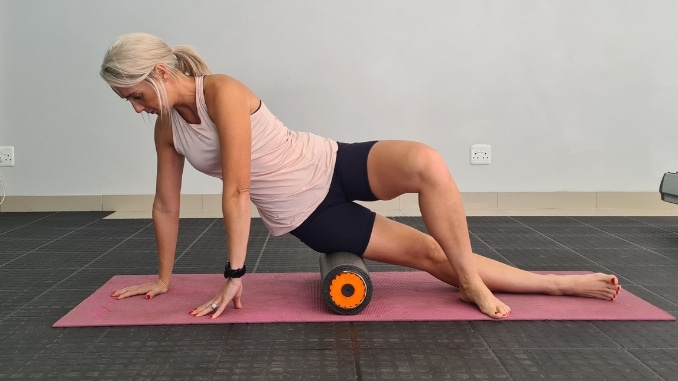
6. Snow Angel
For this foam roller exercises for legs, lie on your back on the floor with your knees bent and your feet flat on the floor. Place the foam roller vertically along your spine, with your head supported on one end of the roller and your seat on the opposite end of the roller. Maintain a good alignment with your head, shoulders, and hips as you keep your balance. Engage your core and slowly bring your arms overhead in wide arcs, similar to a snow angel movement. Lower your arms to return to the starting position and repeat the movement. Start with 1 set of 10 repetitions.
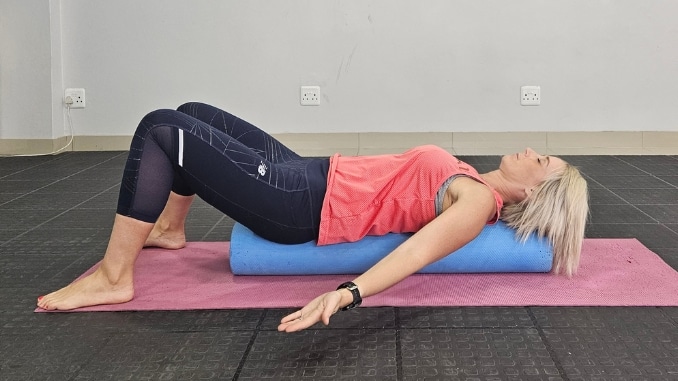 |
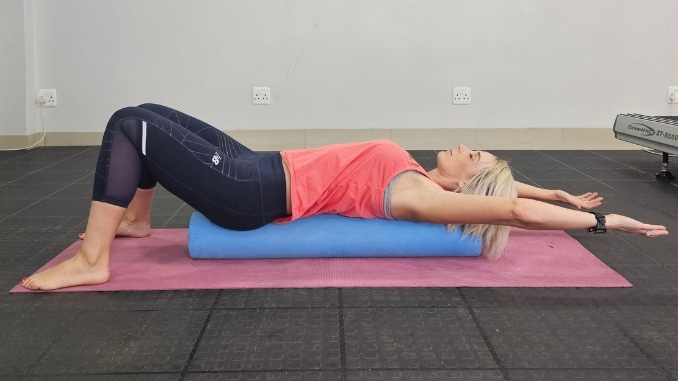 |
Variation – Snow Angel
Lie on your back on the floor with your knees bent and your feet flat on the floor. Place the foam roller vertically along your spine, with your head supported on one end of the roller and your seat on the opposite end of the roller. Maintain a good alignment with your head, shoulders, and hips as you keep your balance. Cross your arms over your chest and engage your core. Then, gently roll the foam roller from side to side. Perform this movement for several repetitions as needed, ensuring there is no discomfort in the spine.
Depending on your comfort level, you may also choose to stay in a holding position with your arms extended to the sides.
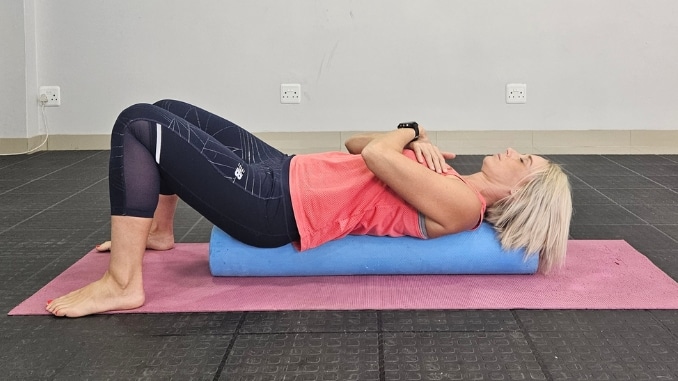 |
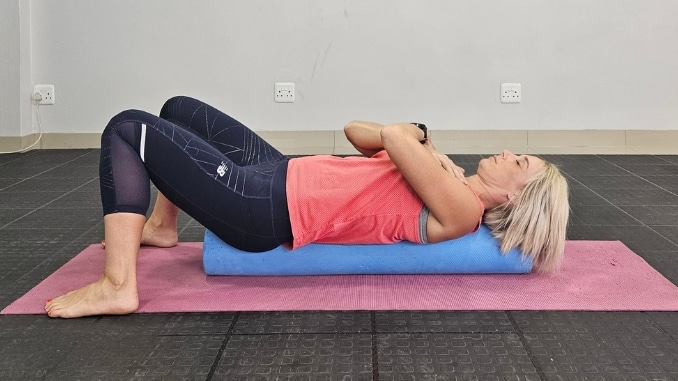 |
Types of Foam Rollers
1. Regular Foam Roller
These foam rollers are typically cylindrical and made of dense, solid foam material. Standard foam rollers are versatile and are used for various self-myofascial release and muscle recovery exercises. They are great for beginner foam roller exercises for general muscle maintenance and relaxation.
2. Grid Foam Roller

Grid foam roller for legs have a textured surface with varying patterns of flat and raised areas, resembling the texture of a human hand and fingers. The textured surface of grid foam rollers allows for a deeper massage and can target specific muscle knots or trigger points. They are excellent for releasing tension and enhancing flexibility.
3. Half-Round Foam Roller
Half-round foam rollers are flat on one side and rounded on the other, like a semi-circle. These rollers are often used for balance and stability exercises, particularly in physical therapy and rehabilitation. They can also be used for gentle muscle massage, making them suitable for beginners.
4. Vibrating Foam Roller
Vibrating foam roller for legs are similar in shape to standard foam rollers but are equipped with a built-in vibrating mechanism. The vibrations in these rollers provide additional muscle relaxation and recovery. The pulsations help release muscle tension, proving particularly advantageous for athletes and those with deep-seated muscle tightness.
5. Bumpy or Textured Foam Roller
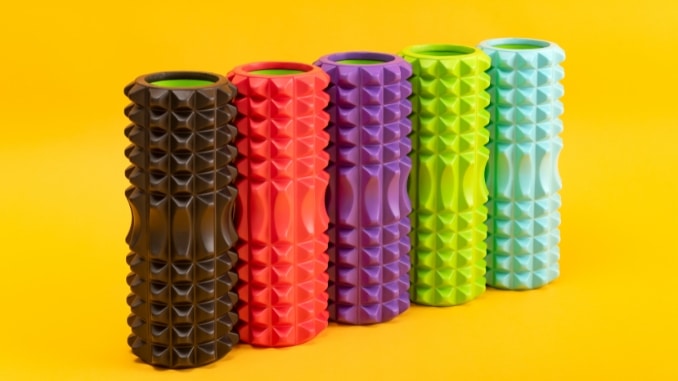
These foam roller for legs have protruding nodules or bumps on their surface. The textured surface of bumpy foam rollers is designed to target trigger points and provide a more intense deep-tissue massage. They are effective in releasing muscle knots and improving circulation.
6. Soft Density Foam Roller
Soft-density foam roller are made from a less dense foam material, making them less rigid and more cushioned. These rollers are ideal for individuals new to foam rolling or with sensitive muscles. They offer a gentler massage and are well-suited for beginners, warm-ups, or those with lower pain tolerance.
Conclusion
In conclusion, foam rollers emerge as a transformative tool in exercise and fitness, pivotal in enhancing muscle recovery, flexibility, and overall physical well-being. Their effectiveness cannot be overstated, making the incorporation of foam rolling, especially for your legs, a strategic move with the potential for remarkable results.
The self-myofascial release facilitated by foam rollers alleviates muscle tightness, reduces injury risk, and enhances performance. Beyond physical relief, it fosters post-workout relaxation, diminishing the potential for soreness and elevating the overall exercise experience.
Foam rolling stands out as a game-changer for the legs, considering their integral role in supporting our body weight and participating in various exercises. Consistent foam rolling for the legs helps prevent muscle imbalances, enhances mobility, and boosts circulation. This holistic approach promotes superior functional fitness, facilitating the achievement of fitness goals with increased ease and comfort.
As a reminder, selecting the best foam rollers ensures safety and effectiveness in your self-myofascial release routine. So, make it a priority to invest in quality foam rollers to safeguard your long-term health and optimize your fitness journey.
As a reminder, selecting the best foam rollers is crucial for ensuring both safety and effectiveness in your self-myofascial release routine. So, make it a priority to invest in quality foam rollers to safeguard your long-term health and optimize your fitness journey.
Whether you are an athlete, a gym enthusiast, or someone who spends far too much time being sedentary, your muscles are begging you to use your foam roller daily! Check out now this 7 Foam Rolling Exercises Your Body is Begging You to Do!

